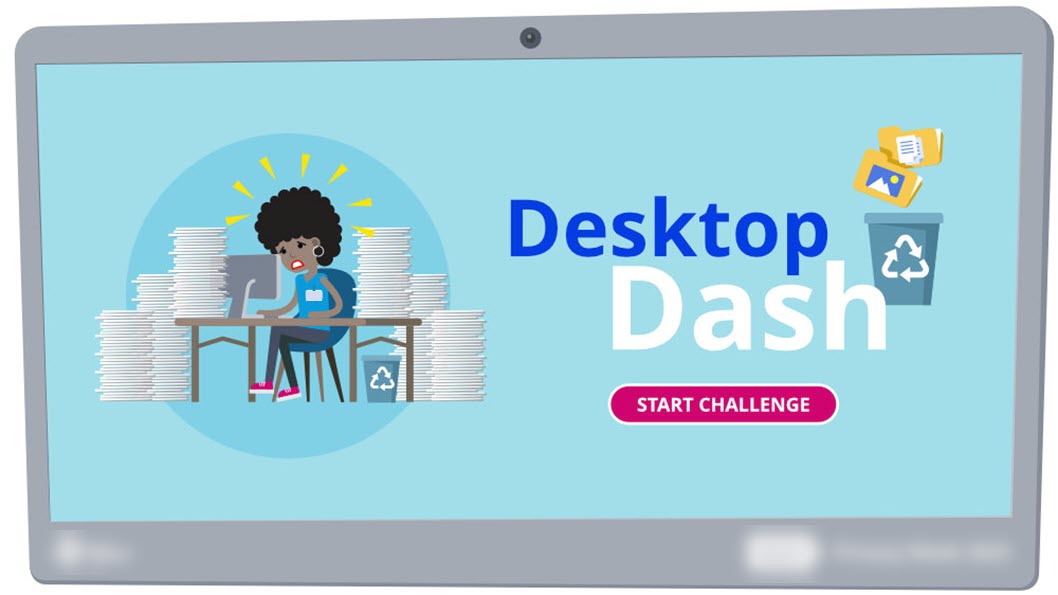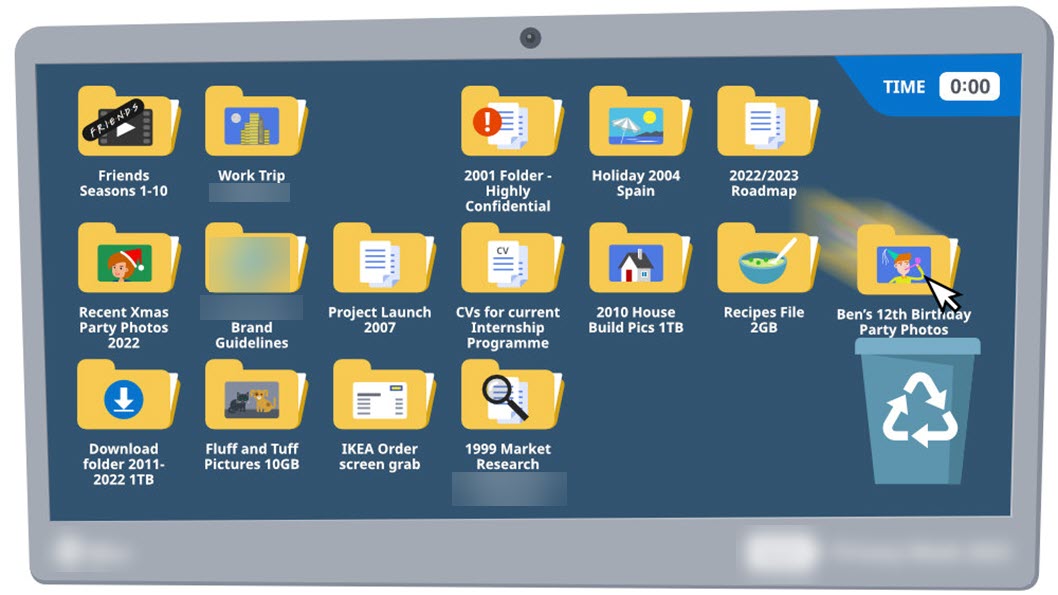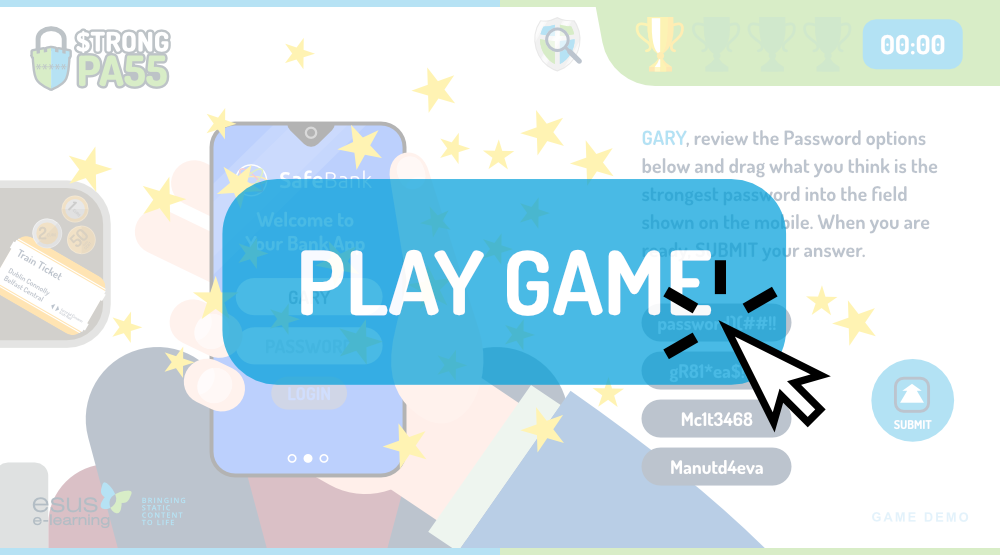Gamified Learning in Action!
Gamified learning is a fantastic way of engaging learners and making e-learning a fun, interactive and positive experience. Being as personal and bespoke as Esus’ services are, we created 6 short demos to showcase the breadth of our e-learning solutions. One of these, our Game Demo, can be played below. Play the demo to see how timers, trophies, and game-effects can boost learner engagement.
What is Gamified Learning?
Gamified learning incorporates game features such as challenges, rewards, levels, and progress tracking into traditional learning materials making them more interactive, enjoyable, and memorable. These activities motivate and inspire learners to actively participate in the learning process. Harnessing our inclination to ‘compete’ we can create an environment where knowledge is acquired, and skills are gained.
In gamified learning the learner can be encouraged to discover the most efficient way to complete a task using constant evaluation – the timer is running; you can see how many points you have been awarded and you are aware of your performance at every stage in the game. Evaluation through continuous feedback allows you the opportunity to change how you approach a specific task. The level of difficulty in the challenges can be increased as learners go through a game, helping to boost skills to assist in completing the challenges and meeting the final e-learning objective.
What do the Statistics tell us?
Participating in fun and rewarding activities releases endorphins so if we create engaging gamified learning, that we actively enjoy, we will be happy to repeat it again, motivating us to consume material passively thus retaining information more easily.
The effectiveness of gamified learning is supported by some compelling statistics.
- Gamification increases employee engagement levels by 48%.
- 62% of employees say that they would be motivated to learn if the approach was gamified.
- Gamification leads to a 100% increase in the amount of information retained by trainees, as compared to traditional training.
- 90% of employees surveyed reported that they felt more productive when gamification was integrated into their work experience.
(Source: Gitnux Market Data Report 2024)
The feedback we have received from our own clients, for whom we have implemented gamified learning programmes, backs up these statistics, confirming its effectiveness as a powerful approach to digital learning.
“….this is one of the best & most effectively designed online trainings I’ve done in 11 years at [redacted company name]. The content, the script, the graphics, the gamified scoring, the pace, the natural tone of the narrator made what could otherwise be a tedious & boring course, much more engaging, interesting & memorable. It’s refreshing to see the topic being taught in such an engaging fashion while losing none of the key message…”
Food & Drink Client
What are some of the Common Features?
Gamified learning incorporates a range of game design elements to enhance the learning experience by encouraging participation and engagement. These elements may include:
- Points, badges, and leaderboards to reward progress and encourage competition.
- Levels and challenges that can gradually increase in difficulty to maintain engagement.
- Immediate feedback mechanisms to provide learners with timely reinforcement.
- Role-playing and simulations to encourage the learner to use their problem solving and decision-making skills.
- Personalisation options that allow tailors users’ learning journey to their training needs.
Unlocking the Benefits
Gamified learning enhances learner engagement and comprehension. Some of the key benefits are:
- Increased engagement and motivation: Capturing the learners’ interest and sustaining their engagement through interactive and rewarding activities.
- Enhanced retention and comprehension: The immersive nature of gamified learning facilitates better retention of information and deeper understanding of concepts.
- Collaborative Learning: Putting what you have learned into practice and learning from doing. Active versus passive learners.
- Real-time feedback and progress tracking: Learners receive immediate feedback on their performance, identifying areas for improvement and tracking their progress.
- Flexibility and autonomy: Flexible learning and personalised experiences, accommodate diverse learning styles and preferences.
By implementing a rewards system from the beginning, customising the experience to each learner’s level, and signalling the learner’s ongoing achievements, gamified learning provides a sense of achievement and a sense of accomplishment for the learner.
The Implementation Process
The key to implementing any learning programme is getting the fundamentals right – look at your content and your audience, what is your learning objective, how will you ensure that the material is relevant and impactful? When you have these details, you can determine if gamifcation is suitable for your training. Transforming your learning material into gamified content can be implemented as follows.
- Define learning objectives: Start by defining the goals and objectives you aim to achieve through gamified learning to ensure alignment with educational outcomes.
- Select appropriate content: Identify the learning materials that lend themselves well to gamification, considering factors such as complexity, relevance, and learner engagement.
- Design Features: Use interactive challenges, simulations, or paths that incorporate gamification elements such as points, rewards, and progression.
By following these steps, you can lay the groundwork for the successful implementation of gamified learning.
Sample Project
We recently designed a Challenge Game for a global leader in the Pharmaceutical sector where the main objective of the challenge was for the learner to bin all the “inappropriate” items on their desktop in the shortest time possible.
The game focused on best practice relating to data minimisation, following a clean desk policy, respecting sensitive information and ultimately being accountable for all the information being handled by the learner.


What Next?
As technology continues to advance, we can expect to see many new opportunities for gamified learning in the areas of augmented reality, AI LLMs and virtual reality. Gamified learning creates an immersive learning experience that challenges, engages, and empowers the learners and it will be exciting to see what new innovations lay ahead.
We hope you found this post helpful. If you would like more information on gamifying your learning and how it can benefit your organisation, please contact Esus E-learning at info@esus.ie

